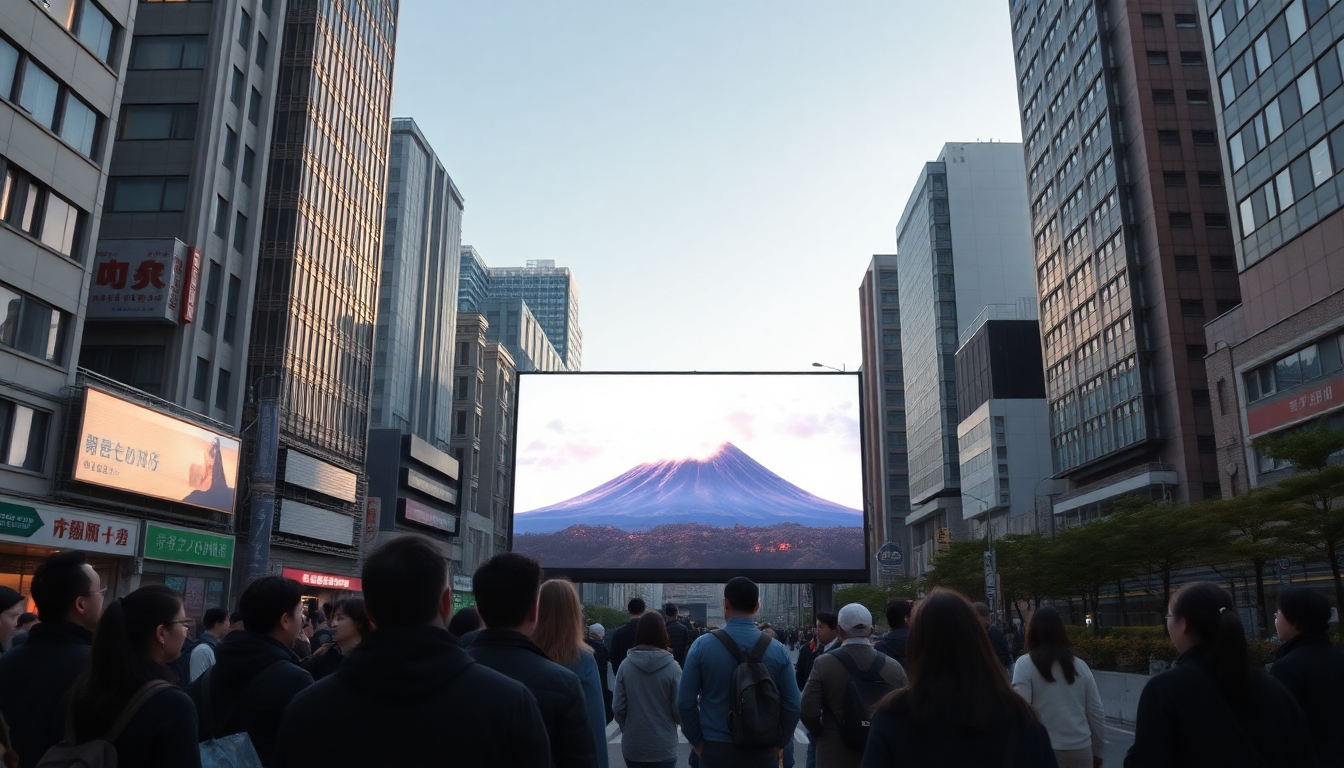Table of Contents
The Japanese government is stepping up to raise awareness about the potential dangers of volcanic activity with an eye-catching AI-generated simulation video. This striking visual serves as a reminder of the risks posed by Mount Fuji, an active volcano sitting near Tokyo.
While the chances of an eruption happening anytime soon are low, the simulation paints a vivid picture of the rapid and devastating aftermath that could follow. It’s a wake-up call for residents to think about their preparedness for a natural disaster.
The Simulation: A Glimpse into Potential Chaos
The video kicks off with a woman getting a mobile alert about an impending eruption. And then, a narrator warns, “The moment may arrive without any warning.” Talk about chilling! This message drives home just how unpredictable volcanic activity can be.
The simulation goes on to show that volcanic ash could cover Tokyo in just two hours after an eruption, bringing serious health risks and throwing essential services like power, transportation, and food distribution into chaos.
In response to these alarming possibilities, the Japanese government is encouraging residents to visualize various disaster scenarios.
This proactive approach aims to cultivate a mindset of preparedness, helping individuals and families devise plans that could lessen the turmoil following a volcanic event. And with Japan’s location along the Ring of Fire, where seismic activity is the norm, this kind of foresight is vital.
Public Reaction and Preparedness Strategies
The public’s reaction to the simulation has been a mixed bag. Many residents voiced real concerns about how volcanic ash might impact transportation in the densely populated Tokyo area. One social media user expressed fear over potential disruptions, while another shared the challenges of preparing for such an event, listing must-have items like a camping stove, flashlight, and water.
This sentiment reveals a widespread anxiety about how to maintain normalcy amid disaster.
On the flip side, some folks criticized the government’s approach as being overly dramatic. They argue that such simulations might spark fear instead of encouraging constructive preparedness. Still, local authorities are urging residents living near Mount Fuji to stay alert. Back in March, they advised people to keep enough supplies to last for two weeks, underscoring the importance of being ready for any eventuality.
The Potential Impact of an Eruption
Government estimates about a possible eruption of Mount Fuji are staggering. An eruption could unleash around 1.7 billion cubic meters of volcanic ash, with about 490 million cubic meters potentially settling in urban areas, including roads and buildings. This could lead to serious structural damage and even collapses. The impact on infrastructure, like transportation and power supply, would be profound. Piles of ash could block roads, disrupt train services, and damage power lines, leading to widespread outages.
Economically, the fallout from a significant eruption could be catastrophic, with estimates suggesting losses could soar up to 2.5 trillion yen—roughly A$26 billion. With figures like these, it’s clear that both individuals and authorities must prioritize disaster preparedness. As the government continues to stress the importance of readiness, residents are encouraged to think about how best to equip themselves for these potential challenges.





